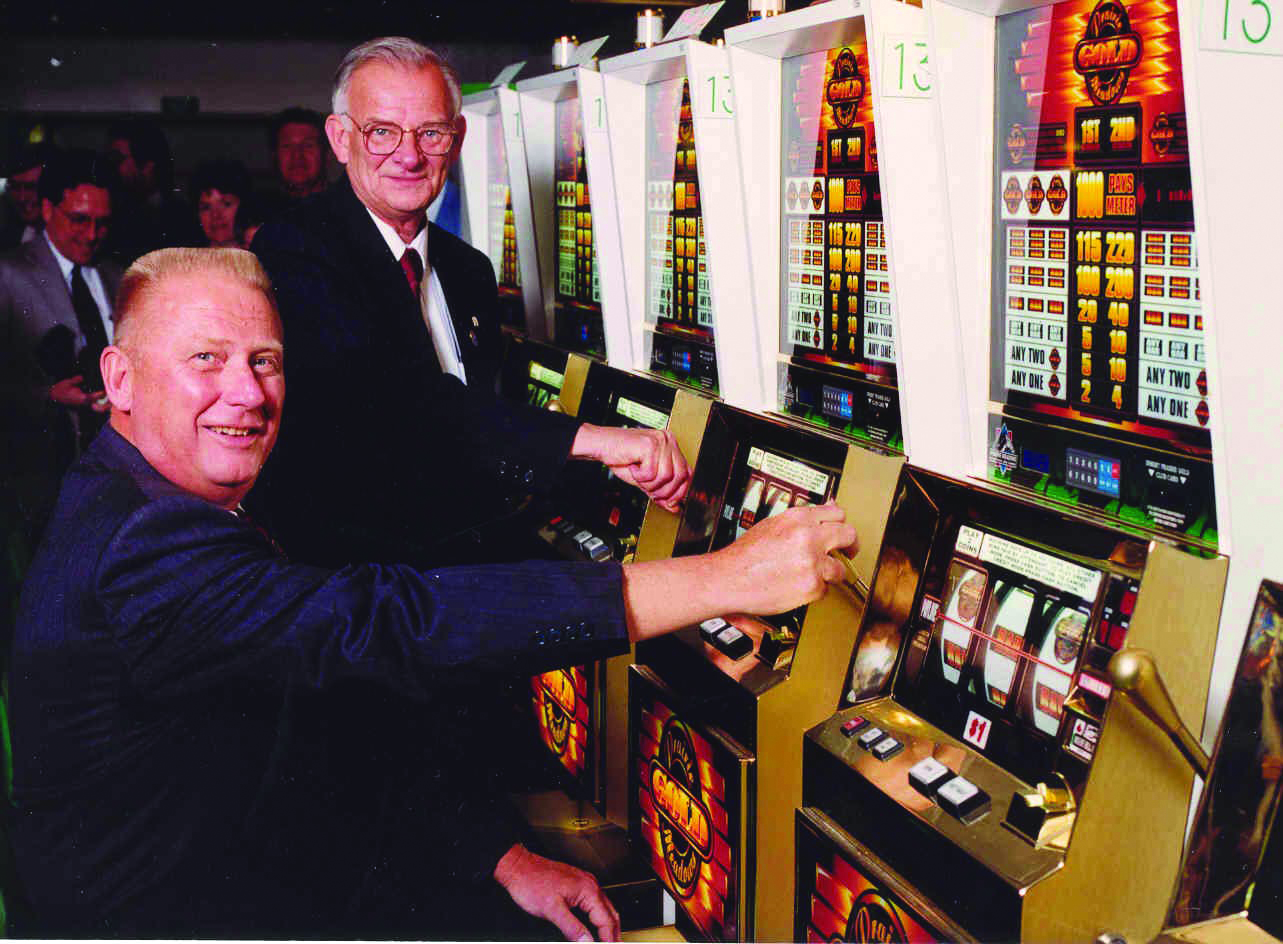HISTORY
Our History
1980s
In the early 1980s, several local businessmen had a vision that would help Iowa’s agricultural community, spur economic development and job growth in central Iowa, and create a dynamic entertainment venue that would attract visitors from all over the Midwest. That vision was 啪啪视频 Racetrack.
Ken Grandquist, Jack Bishop, Ed Skinner, Jim Rasmussen, and Gary Palmer were local leaders and entrepreneurs who had spent their lives in central Iowa. Over the course of several years, these five men – with the help of hundreds of local supporters, volunteers, and civic leaders – promoted the business concept of 啪啪视频 Racetrack.
In July 1984 the Iowa Racing Commission issued the state’s first pari-mutuel license that would allow for the construction of a horse track. A 240-acre site of pastureland, just east of Adventureland Amusement Park, was selected as the location for this new venture.

The Polk County Board of Supervisors voted to back the $40 million in bonds necessary to build the track. The racehorses burst out of 啪啪视频’ starting gate for the very first time on March 1, 1989. Despite cold temps, a sellout crowd of more than 7,100 were there, eager to wager on Iowa’s first horse races.
1990s
The early 1990s brought new economic challenges to the state of Iowa. These challenges weighed heavily on 啪啪视频’ bottom line. The revenue from horse racing and dining at 啪啪视频 was not meeting expectations, and the property was forced to file for Chapter 11 bankruptcy protection in November of 1991.
The team of Bishop, Skinner, Rasmussen, and Palmer collaborated with Polk County leaders and worked to get a bill passed in the Iowa legislature that would allow 啪啪视频 to incorporate slot machine gaming. After much hard work, the bill was approved by a single vote. It was signed into law by Governor Terry Branstad in 1994. In May of that same year, Polk County voters also approved the referendum of adding slot machines by a 62 to 38 percent margin.

With approval from the state and county, it was now time to decide how to manage 啪啪视频. President of the Racing Association of Central Iowa, Jim Rasmussen, had an idea that would greatly benefit Polk County. He envisioned 啪啪视频 running as a public nonprofit, dedicated to lessening the burden of government by raising funds for charitable organizations and community improvement projects. It was quickly decided that 啪啪视频 would be managed locally and overseen by a board of directors. That decision in 1994 has resulted in hundreds of millions of dollars in profits remaining in Iowa and Polk County – profits that would have left the state if an outside management firm had taken over day-to-day operations of 啪啪视频. 啪啪视频 is currently one of only two casinos in the U.S. that functions as a nonprofit.
On April 1, 1995, a capacity crowd of 15,000 poured through the doors of the nation’s first racino – a horse track and slot machine casino combination. The addition of slots was met with unprecedented success.

This private-public partnership allowed 啪啪视频 to repay nearly $90 million of debt to Polk County in just 20 short months. 啪啪视频’ success continued, and over the years, 啪啪视频 has grown into the No. 1 entertainment destination in Iowa.
2000s – TODAY
In 2004, 啪啪视频 added table games to the casino mix. The property expanded its entertainment offerings by adding the The Meadows Events Center in 2007. Soon after, 啪啪视频 debuted restaurants Triple Crown Buffet and AJ’s Steakhouse. With the completion of 啪啪视频 Hotel in 2012, guests were able to stay and play – making 啪啪视频 a major tourist destination. Another restaurant, Café at the Meadows was added shortly after the hotel opened for business. And in 2016, an all-new loyalty program titled 啪啪视频 Gold Rewards, launched at 啪啪视频. This robust program rewards both gaming and non-gaming guests while offering the best casino rewards benefits in the Midwest.

啪啪视频 is the result of a complete community effort, thanks to the commitment of volunteers, business leaders, elected officials, and hundreds of others who have been instrumental in the development and continued success of one of the great private-public business experiments in the entertainment industry.